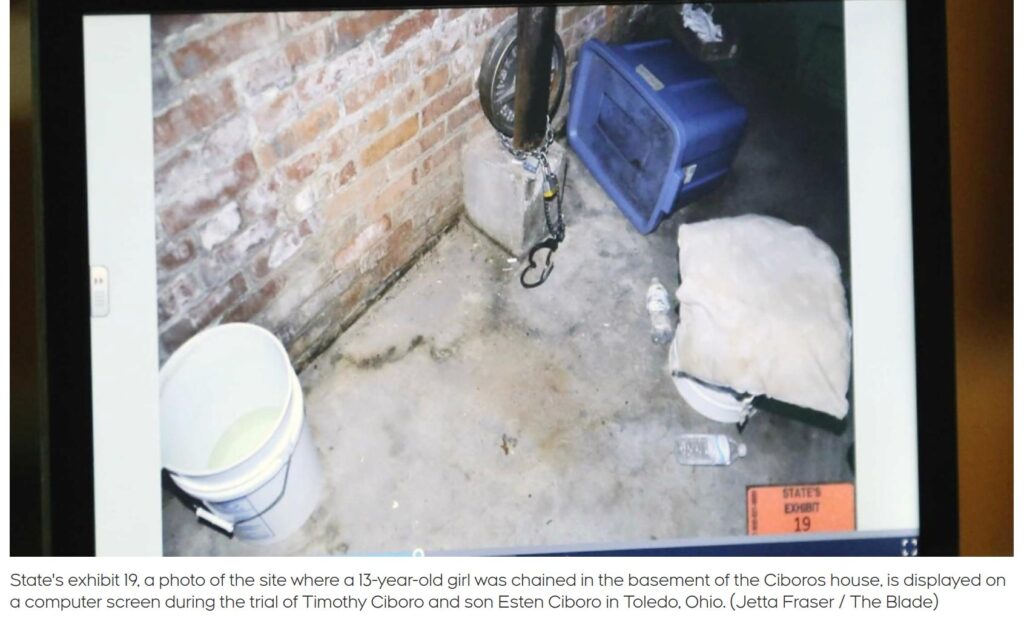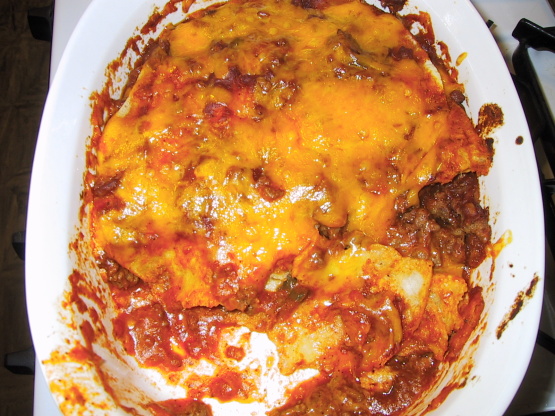You know what I really love? I love a fresh backed hard roll or loaf of bread. And I love it with a fresh ripe tomato, olive oil, salt and butter.
Some of my little pleasures.
I also love cuddling with my little buds. A fine icy-cold, frosty beer on a hot, hot day of labor. And of course, chilling out with a good paperback (book) on a gloomy rainy afternoon.
Little pleasures. Worth appreciating. Worth noting.
Something positive…
For the Daily Cosmologist there is the posting link below from Xinhuanet
China to launch Einstein Probe to observe changing universe
The quotes
BEIJING, March 18 (Xinhua) -- China plans to launch a new X-ray astronomical satellite, Einstein Probe (EP), at the end of this year, said Yuan Weimin, principal investigator of the satellite project. ..... Further research requires a new generation of detection equipment with extremely large fields of view, high sensitivity, high resolution, and fast response capabilities, he added. But the important question in this regard is how to make such equipment. Biologists discovered early on that the lobster's eye is different from other animals. Lobster eyes are made up of numerous tiny square tubes, pointing to the same spherical center. This structure allows light from all directions to reflect in the tubes and converge on the retina, which gives the lobster a large field of view. Scientists then simulated the lobster eye to create a telescope to detect X-rays in space. Through cooperation with other organizations, the X-ray Imaging Laboratory of NAOC began the research and development work on lobster-eye X-ray imaging technology in 2010 and finally made a breakthrough. The team carried out the test validation of the technology on the telescope Lobster Eye Imager for Astronomy (LEIA) -- a pathfinder of the EP instrument -- which was launched in July 2022, and revealed the world's first batch of large-field X-ray snapshots of the sky captured by the LEIA. "Thanks to the lobster-eye telescope technology, the Einstein Probe will be able to monitor the currently poorly known soft X-ray band with a large field of view and high sensitivity," Yuan said.
Posted by: psychohistorian | Mar 19 2023 15:08 utc | 6
Meatballs with Pineapple and Peppers

Ingredients
- 1 egg, slightly beaten
- 1 tablespoon cornstarch
- 2 tablespoons chopped onion
- 1 teaspoon salt
- 1/4 teaspoon pepper
- 1 pound ground beef
- Vegetable cooking spray
- 1 cup pineapple juice
- 2 green bell peppers, cut into strips
- 1/4 cup granulated sugar
- 3 tablespoons cornstarch
- 1/3 cup water
- 3 tablespoon white vinegar
- 1 tablespoon soy sauce
- 1 (8 ounce) can unsweetened pineapple chunks, drained
- Hot cooked rice
Instructions
- Combine first 6 ingredients, and shape into 1 1/2 inch meatballs. Set aside.
- Coat a large nonstick skillet with cooking spray; place skillet over medium-high heat until hot. Add meatballs, and cook until brown; drain. Discard drippings.
- Return meatballs to skillet; add pineapple juice and green pepper. Bring to a boil over medium heat; cook 3 minutes, stirring often.
- Combine sugar and next 4 ingredients; add to skillet, and bring mixture to a boil, stirring constantly.
- Stir in pineapple chunks; cook until thoroughly heated.
- Serve meatballs over rice.
Much of the conjecture in the western media is that Xi will try to negotiate a cease-fire between Russia and Ukraine. Not likely; in the big picture, Ukraine is not important because this is about China and Russia working together to dismantle US economic dominance of the global economy with the dollar, or de-dollarization.
China and Russia are the two leading members of BRICS, which also includes Brazil, India and South Africa. China is now the default spokesman for the developing economies or Global South. The US is the leader of the Free World/EU/NATO.
They are rapidly heading for a clash.
In technology, when two processes are fighting over limited resources to complete their individual process ahead of the other, it is called a race condition. There is now a race condition between the US and China.
The US has the world’s greatest and most experienced military, and wants to preserve its dominance. For the US, the best way to achieve this is to provoke a military confrontation with China over Taiwan through the creation of something like a Gulf of Tonkin incident to use as a pretext for war with China. Technically speaking, the US never fires the first shot in a war, but it does know how to push the other side through sanctions and other tools so that the other guy fires the first shot.
That was the trap Putin fell into over Ukraine.
China does not want open war with the US because it would damage China’s economy and development plans. Internationally, it would hurt the BRI plan, which has been used to finance and develop infrastructure in the Global South. The BRI has been financed with China’s trade surplus from the US, which is an important reason for the US wanting to decouple supply chains from China.
From the Chinese perspective, a relatively peaceful way to replace US domination or hegemony is through de-dollarization, or to erode the dominance of the US dollar so that it is no longer the global reserve currency which dominates world trade. Russia already no longer holds dollar reserves, while China holds several trillion, but is trying to move off the dollar and into gold and rubles. The trick for China: How to move out of dollars without losing all its value?
The dollar is important for the US because owning the world’s global reserve currency has meant that the US has been getting a free ride on the world economy because it has control over the US dollar money supply. But by the widespread use of sanctions, the US Congress has shown the rest of the world that they are vulnerable if they run foul of US interests.
The US economy is now in a very brittle condition because the recent rise in Fed rates have shown how weak small and regional banks like Silicon Valley Bank, First Republic and even Credit Suisse are, and how the banking sector is unable to sustain further Fed increases.
But what would happen if China, Saudi Arabia and Brazil coordinated sales of their US Treasuries in global markets? If the supply becomes more than the US Treasury can buy back at once, it would be forced to raise interest rates. Then the downward spiral of the US economy would begin…
This is why US Treasury Secretary Janet Yellen wants to visit China; she wants to talk the Chinese out of selling US Treasuries, and maybe to even buy more US Treasuries. Her problem is that while she needs to make nice with China, Biden and the State Department are preparing to go to war with China. Which is why China is not receiving Yellen.
While China and Russia’s de-dollarization plans make sense: it has one big weakness. Right now, they do not offer a clear alternative to the dollar. So the nations of the Global South and Saudi Arabia and the Gulf states are asking: “We are good friends with China, we trust China, but we need an alternative to the dollar besides just gold. Offer that to us, and we are ready to make the change.”
So instead of Ukraine, which is really NOT important, Xi and Putin are more likely to be planning their new economic order. While we can be sure that China and Russia will coordinate their economic and currency policies, it is not enough if they are the only two countries aboard because that would turn it too much into an anti-West political alliance. If their plan is going to fly, there has to be more to it.
HINT: The newly elected President of Brazil, widely known as Lula, will be visiting Beijing after Xi’s visit to Moscow. If Brazil comes aboard the China-Russian currency proposal, then it will become a China/Russia/Brazil initiative, with 3 of the 5 members of BRICS aboard. India will not come aboard because it has outstanding border issues with China and is also a member of the QUAD anti-China alliance, and India likes to play the wild card role between China and the west. South Africa is too geographically isolated to be significant.
If these three nations develop a proposal, they will then present it to Saudi Arabia, Iran and the Gulf states as an alternative to the dollar. When this happens, the Global South will then have a real alternative to the US dollar.
The US knows that if this happens, then everyone in the world will see that the period of US economic domination will be coming to an end. The Biden administration cannot afford to have this happen because they would go down in history. Far far down.
So this is the reason for the provocations of China over Taiwan.
So the race condition is this: Which comes first: US-China war over Taiwan, or the BRICS currency alternative to the US dollar?
The US wants war with China over Taiwan first, and China wants the BRICS currency alternative first.
Enjoy the show!
Tenacious D – Tribute (Official Video)
Former ‘Top Gun’ pilot accused of helping China moved to Australian maximum security jail
A former US fighter pilot who became an Australian citizen and is accused of helping train Chinese military pilots has been moved to a maximum security prison in New South Wales ahead of his next court appearance.
The father of six has denied the allegations, saying they were "political" posturing by the US, which unfairly singled him out.
His lawyers are opposing his extradition and the case is proceeding through Sydney courts where a magistrate will decide whether Duggan, who became an Australian citizen in 2012, is eligible for extradition. A hearing is scheduled for tomorrow.
Duggan, speaking from jail via a spokesperson, said he was in a two-metre by four-metre cell and was being held alongside convicted terrorists, rapists and murderers.
The spokesperson said it will cost his family about $1 million to fund a legal team to continue his legal battle.
Born in Boston, Duggan served in the US Marines for 12 years before migrating to Australia in 2002. In January 2012, he gained Australian citizenship, choosing to give up his US citizenship in the process.
The indictment says Duggan travelled to the US, China and South Africa, and provided some training to Chinese pilots in South Africa.
Defence Minister Richard Marles late last year ordered officials to investigate if any former Australian Defence Force personnel had trained members of the Chinese armed forces and also review laws about ex ADF members.
Foo Fighters – Learn To Fly (Official Music Video)
‘Modern Western Aircraft’ – Ukraine Open Thread 2023-65
NY Times – More MIG fighters will help Ukraine, but what Kyiv really wants are F-16s.
“To some extent, this will increase our combat capabilities,” [Yuriy Ihnat, a spokesman for the Ukrainian air force,] said in an appearance on Ukrainian national television Friday morning. “But one should not forget that these are still Soviet and not modern Western aircraft.”
…
The Ukrainian argument is that the F-16 is better than the MIG at shooting down cruise missiles because of its powerful radar and modern missiles, and could offer vastly more protection from Russian bombardment.
F-16:
The initial production-standard F-16A flew for the first time on 7 August 1978 and its delivery was accepted by the USAF on 6 January 1979.
…
The AN/APG-68 [radar], an evolution of the APG-66, was introduced with the F-16C/D Block 25. The APG-68 has greater range and resolution, as well as 25 operating modes, including ground-mapping, Doppler beam-sharpening, ground moving target indication, sea target, and track while scan (TWS) for up to 10 targets. The Block 40/42’s APG-68(V)1 model added […] a high-PRF pulse-Doppler track mode to provide Interrupted Continuous Wave guidance for semi-active radar-homing (SARH) missiles like the AIM-7 Sparrow.
[T]he MiG-29, along with the larger Sukhoi Su-27, was developed to counter new U.S. fighters such as the McDonnell Douglas F-15 Eagle and the General Dynamics F-16 Fighting Falcon. The MiG-29 entered service with the Soviet Air Forces in 1983.
…
The latest upgraded aircraft offered the N010 Zhuk-M, which has a planar array antenna rather than a dish, improving range, and a much superior processing ability, with multiple-target engagement capability and compatibility with the Vympel R-77 [active radar homing beyond-visual-range air-to-air missile] (or RVV-AE).
The current open thread for other issues is here.
Please stick to the topic. Contribute facts. Do not attack other commentators.
Cheese and Tortilla Pie

Ingredients
- 1/2 pound Monterey jack cheese, grated
- 1/2 pound Cheddar cheese, grated
- 1 can sliced black olives
- 3 or 4 chopped green onions
- 8 (4-inch) corn tortillas
- 1 1/2 cup cottage cheese
- 1/2 cup sour cream
- 1 (8 ounce) can tomato sauce
- 1 (8 ounce) can green chile salsa
Instructions
- Heat oven to 350 degrees F. Grease a 3-quart casserole.
- Combine the grated cheeses, olives, green onions (reserve 1/4 cup of the cheese for tipping). Combine cottage cheese and sour cream.
- In prepared casserole start layering tortillas, cottage cheese mixture and cheeses. Repeat.
- Combine tomato sauce and green chile salsa and pour over top of casserole. Top with remaining grated cheese.
- Bake covered for 40 minutes.
Anti-China Propaganda DISMANTLED On BBC!
Australia is making poor choices

Peter Gabriel – Sledgehammer (HD version)
Woman, 20, ‘who was locked in a cupboard for a decade by her ex-con aunt, beaten and forced to have sex’ sues city of Philadelphia for ‘failing to prevent abuse’
- Linda Ann Weston awarded custody of her niece Beatrice Weston, then 10, when her mother could no longer care for her
- Aunt ‘locked her in a cupboard, beat her, burned her skin, made her drink her own urine and forced her into prostitution’
- Beatrice, then 19, was found last year when police discovered four mentally disabled adults ‘locked up by her aunt in the basement’
- Beatrice now suing city of Philadelphia for failing to prevent abuse
- Her aunt had served eight years in prison for starving man to death
- City ‘carried out no checks at the home and ignored complaints’
A 20-year-old woman who was beaten and held captive in a cupboard for a decade by her aunt – a convicted killer – is suing the city of Philadelphia for failing to prevent the horrifying ordeal.
Beatrice Weston claims the city failed to properly train its care workers, resulting in her being given to her aunt, who had served eight years behind bars for starving her sister’s boyfriend to death in 1981.
Weston was allegedly beaten with a baseball bat, forced to consume her own urine, held in a tiny closet and prostituted in the 10 years she was in the custody of her aunt, Linda Ann Weston.
The cruel conditions were discovered last October when four mentally-disabled adults were found in the dank, cramped basement of an apartment building where her aunt lived.

The elder Weston and three others – including her daughter – were arrested, accused of holding the victims captive in order to claim on their Social Security checks.
The abuse came even though Linda Weston had served eight years in prison after her first victim, Bernardo Ramos, ‘was held captive for an extended period of time, locked in a closet and literally starved to death’, Police Commissioner Charles Ramsey said.

Beatrice Weston’s complaint says the city of Philadelphia failed to release information about the aunt’s criminal history in 2002, after her mother said she could not care for her.
Workers failed to carry out home investigations or arrange for health evaluations of Beatrice, according to the lawsuit, the Philadelphia Inquirer reported.

It also names two other defendants, Nefertiti Savoy, a former social worker with the Department of Human Services, and Richard Ames, an attorney who recommended Weston be given to her aunt.
‘Beatrice Weston was forcibly prostituted by Linda Ann Weston and was regularly beaten, starved, and denied medical and dental care, as well as schooling,’ the lawsuit states.
‘During these 10 years, the City of Philadelphia received numerous complaints that Linda Ann Weston was holding children captive in her basement.’
The suit seeks damages for her anguish, payment for her medical and therapy expenses, and compensation for loss of past and future earnings, the Inquirer reported.
‘Jurors are going to have to fix a value on every day, every month, every year that she was imprisoned,’ her attorney Shanin Specter said. ‘There’s no amount of money that’s fair.’

She added that Weston is planning to go to school later this year.
Linda Weston’s attorney told CNN she had not seen the complaint and would likely not be representing her in any civil hearing.

Sick: Beatrice’s cousin Jean McIntosh allegedly taunted her through the cupboard door
She faces a trial in January on charges of kidnapping, assault, conspiracy, false imprisonment and other related counts to holding the four adults captive.
Last January, Beatrice Weston explained she had been held captive since she was 10 and starved, beaten and forced into prostitution by her aunt and cousin, Jean McIntosh.
She said she was locked inside a closet inside an apartment in the same building where the adults were found in the basement. She huddled on the floor under the shelves, she said.
‘I knew it was morning because light came through the window and the crack under the door,’ she said, adding that she was only allowed out once a day. ‘Sometimes I got food, I think once a day.’
She added that her cousin taunted her, saying through the door: ‘Don’t you wish that you was out of that closet taking a hot shower like me?’
When she was found, police noted she had pellet gun wounds and burn marks, suggesting she was scolded with a hot spoon.
‘She is in very, very poor condition,’ Philadelphia Police Lieutenant Ray Evers said at the time. ‘She has lost a lot of weight. She has newer injuries, definitely some older injuries, a lot of scarring.’
The four mentally disabled adults – Edwin Sanabria, Herbert Knowles, Tamara Breeden and Derwin McLemire – were found locked in the room with no food and only a bucket for a toilet and a bath.

Their plight was discovered when the building’s landlord, Turgut Gozleveli, came across two dog bowls in the apartment block, even though pets were not allowed.
He asked all the tenants if they had any animals and, when they said no, he searched the basement for pets – but instead came across the starving victims hiding under quilts and chained to the walls.
Police reports noted the pitch-black, 13-by-7 foot space reeked of urine and feces. Rags and tatty were scatted throughout the tiny room, which housed an old boiler.
‘I used the bucket to go to the bathroom. Others used the same bucket,’ Sanabria testified in January. He added that for a bath, they ‘used the same bucket we used to urinate in’.
McIntosh, 32, and Linda Weston, 51, were arrested. Her boyfriend, Gregory Thomas, 47, and Eddie Wright, 50, were also charged with taking Social Security checks. They go on trial in January.
Republica – Ready to Go (Official Video)
I can’t remember, are we in the jungle or the garden?
Someone projected on another thread that our civilization war was going to lead to two trade blocks that wouldn’t talk to each other.
I hope that doesn’t occur because I believe that are too many benefits to human sharing.
The posting from Xinhuanet below describes China taking the next step into global leadership, IMO
BEIJING, March 17 (Xinhua) -- The Global Civilization Initiative, proposed by Chinese President Xi Jinping, will inject fresh and strong energy into the common development and progress of human society in a world fraught with multiple challenges and crises. Elaborating on the new initiative at the CPC in Dialogue with World Political Parties High-Level Meeting on Wednesday, Xi, also general secretary of the Communist Party of China (CPC) Central Committee, called for respecting the diversity of civilizations, advocating the common values of humanity, valuing the inheritance and innovation of civilizations, and strengthening international people-to-people exchanges and cooperation. The initiative is another major public product provided to the world by China after the Global Development Initiative and the Global Security Initiative, both put forward by Xi, in 2021 and 2022, respectively. In the history of humanity, over thousands of years, various civilizations have come into being, developed, and have in return promoted the overall development of human society. Diversity has been a prominent feature of civilizations. In spite of differences in histories, cultures, political systems and development phases, countries around the world share the common aspiration for peace, development, equity, justice, democracy and freedom -- the common values of humanity. People need to keep an open mind in appreciating how different civilizations perceive values, and refrain from imposing their own values or models on others, and from stoking ideological confrontation. As the world is facing old and new challenges, there are more reasons for us to promote dialogue and consultation when addressing international issues, and to let cultural exchanges transcend estrangement, mutual learning transcend clashes, and coexistence transcend feelings of superiority. Spanning thousands of miles, the ancient Silk Road has embodied the spirit of cooperation, mutual learning and mutual benefit. The year 2023 marks the 10th anniversary of China's proposal of the Belt and Road Initiative (BRI), another public good which has brought tangible benefits to people of participating countries and promoted people-to-people exchanges. The diversity of civilizations is in nature a source of vitality and momentum in human development. Promoting people-to-people exchanges and mutual learning is of great value in summoning the enormous wisdom and energy needed to advance the progress and development of human civilizations. The BRI has delivered fruitful outcomes and won widespread support and participation. It has created jobs, improved infrastructure and promoted common development, especially in developing countries. Security is the precondition for development. The Global Security Initiative calls for peacefully resolving differences and disputes between countries through dialogue and consultation, and supporting all efforts conducive to the peaceful settlement of crises. The recent Saudi Arabia-Iran dialogue in Beijing is a successful case of the practice of the Global Security Initiative, leading to the resumption of diplomatic ties between the two countries. The future of all countries are closely and increasingly connected. And tolerance, coexistence, exchanges and mutual learning among different civilizations play an irreplaceable role in advancing humanity's modernization process. To realize a world with lasting peace and ever-improving welfare, we should embrace the Global Civilization Initiative and draw on it to jointly create a better, shared future for humanity. A single flower does not make spring, while one hundred flowers in full blossom bring spring to the garden. Together, we can make the garden of world civilizations full of colors and life.
Posted by: psychohistorian | Mar 19 2023 15:00 utc | 3
Girl says she was kept in basement prison with chains, cuffs

TOLEDO, Ohio — A 14-year-old girl who says she escaped a basement where she was chained and handcuffed by two relatives who she says touched her sexually, confronted the two men in court Tuesday.
The girl, who had a comfort dog next to her on the witness stand, testified that she often was held in the basement as punishment by Timothy Ciboro and his 28-year-old son, Esten Ciboro.

Both have pleaded not guilty to charges including rape, kidnapping and child endangering.
The two men are serving as their own attorneys, and questioned the girl after she described being shackled by the ankle to a support beam in the darkened room for different lengths of time.
At one point during her testimony, she told Timothy Ciboro to stop referring to himself as her dad. “You didn’t treat me like a dad,” she said to Ciboro, who is not her biological father.
“You think I like punishing you?” Ciboro responded.
“I would say the sexual touching you enjoyed,” answered the girl, who occasionally paused to pet or smile at the comfort dog, a 2-year-old golden retriever.
Prosecutors said the girl suffered both physical and mental abuse before she used a spare key to escape last summer when she was 13 years old.
Officers found leg irons in the basement along with a bucket the girl said she used as a toilet, according to a police report.
The girl, whose mother was living in Las Vegas at the time, and two other children were living with the two men.
The girl testified that she was treated more harshly than the other two.
Her punishment for wetting the bed worsened from being spanked, to being locked in a bathroom to being chained in the basement, she said.
She also said she first told police that she had not been sexually abused and only mentioned it several months later.
The father and son tried to point out that they had provided her with a home, clothes and food.
“Did your dad act like I loved you?” Timothy Ciboro said to her.
“Sometimes it seemed like that,” she said. “Normal fathers wouldn’t do sexual stuff to their kids.”
Frankie Goes To Hollywood – Relax (Discoring) – 1984 HD & HQ
South-of-the-Border Custard Cassero
Based on rice instead of a pie crust, this savory custard is much like a quiche, a quiche studded with chilies and flavored with taco sauce and onion. The dish goes together in a snap. While it’s in the oven, toss a salad.

Ingredients
- 6 eggs
- 1 cup skim or low-fat milk
- 1/2 cup taco sauce
- 1 tablespoon instant minced onion
- 1/2 teaspoon seasoned salt
- 1 can (4 ounces) chopped green chiles, undrained
- 2 cups cooked rice
- 1 cup (4 ounces) shredded reduced-fat Cheddar or Monterey Jack cheese
- Parsley (optional)
Instructions
- In large bowl, beat together eggs, milk, taco sauce, onion and salt until well blended. Reserving a few pieces of chiles for garnish, stir in remaining chiles, rice and cheese. Pour into greased 8-inch square baking dish.
- Bake in preheated 350 degrees F oven until knife inserted near center comes out clean, about 35 to 40 minutes.
- Garnish with reserved chiles and parsley, if desired.
Dem Senator Spins UNHINGED Fantasy About Ukraine War!
America’s Chips War With China: Another Sanctions Backfire Coming?
The US is trying to hold its high ground of dominance of the semiconductor industry via export restrictions and subsidies to increased domestic manufacturing, notably via the Chips Act. Yet experts are quietly warning that this plan to decouple from China may backfire, particularly if pursued too aggressively.
Semiconductors are fundamental to the operation of commerce and consumer communications, so the US believes it has found a key choke point by which it can impede China’s further rise as an economic superpower. But the wee problem with that view is that the US view thought it had an even more powerful choke point with Russia via its supposed dependence on dollar payment systems. We know how that movie is working out.
Admittedly, the US actions against China’s chips industry are not of the “kill the economy” ambitions of its sanctions against Russia. But there’s a weird myopia in not understanding that China has plenty of ways of retaliating if thing were to get ugly, given US dependence on China for many imports, starting with pharmaceutical ingredients and seemingly humble chemicals like ascorbic acid. And as we’ll address soon, a broad analysis of technology leadership by an Australian think tank shows the China to be number 1 in 37 of 44 categories.
We’ll provide a high level treatment today and plan to go deeper in future posts. Let’s return to the various semiconductor protection moves. As far as I can tell, the justifications were to prevent Chinese spying on Americans and impede China from using advanced chips in military applications (although truth be told, armed forces don’t make much use of the super-small chips that are the focus of the curbs). But even experts who are sympathetic with the idea that the US should do more to protect its interests in its dealings with China think that even with obviously over-broad Trump era measures having been rolled back, the new restrictions aren’t well targeted. From Jon Bateman, a senior fellow at the Carnegie Endowment for International Peace, in Politico in January:
America has embarked on one of its most difficult and dangerous international challenges since the Cold War. The task: reversing decades of economic and technological integration with its chief rival, China. This technological decoupling, if done selectively, will help to preserve America’s military edge, protect key U.S. industries from unfair competition, and push back on Beijing’s human rights abuses. But if decoupling goes too far, it will drag down the U.S. economy, drive away allies, stymie efforts to address global crises like climate change, and increase the odds of a catastrophic war…. Restrictions on Chinese technology make sense when they match the scale of specific threats and buy time for America to bolster its own tech base. But Washington seems intent on a grander crusade — to hobble China at a fundamental level — with little regard for the risks to global stability, the U.S. economy and American alliances.
The Biden Administration first focused on increasing investment in the tech industry, but then started deploying restrictions. Again from Bateman:
Even so, there were growing hints of a more aggressive agenda. First came reports in May that America’s most severe sanctions list — populated with terrorists, drug lords and war criminals — might for the first time target a major Chinese tech firm. Then came the bombshell announcement in October of new export controls on semiconductors and chip-making equipment… The new U.S. export controls block China from importing high-end foreign semiconductors it needs to train artificial intelligence algorithms. At the same time, Washington sought to stop China from making homegrown versions of such chips, or even the mid-range chips that power the Internet of Things and other lesser devices. It therefore barred Chinese chip-makers from importing advanced manufacturing equipment and from working with U.S. personnel… Officials cited the fact that advanced processors can help Beijing model nuclear explosions and missile aerodynamics. But these military applications comprise a tiny fraction of the countless important uses for powerful semiconductors and AI. The vast majority are benign: business process automation, e-commerce, cybersecurity, disease diagnosis and much more. Some uses, like climate change research, would actually benefit the United States and the world…. Alan Estevez, a senior official who oversees export controls, captured the gung-ho mood in late October: “I meet with my staff once a week and say, ‘Okay, what’s next? What are we going to do next? Who’s being bad? Where is the technology area that we need to address?” He said that future controls on biotech, quantum technology, and AI software and algorithms are likely.
That triumphalism seems awfully familiar. Foreign Policy sets forth that view in more detail:
To retain its role as the world’s sole superpower, Washington believes that it has to stop Beijing in its tracks… In this economic war, the United States is unsurprisingly keen to put all forms of economic coercion to good use. The Trump administration imposed tariffs on $360 billion of U.S. imports from China; President Joe Biden has made it clear he is not lifting these…In the financial sphere, U.S. lawmakers are pondering whether to delist more than $1 trillion worth of shares of Chinese companies on U.S. stock exchanges. Congress is also considering barring the Thrift Savings Plan, which manages the pensions of millions of federal government employees, from investing in Chinese companies. The Chinese economy, however, has grown far too big for Washington to sanction Beijing with its usual toolkit…. Semiconductors are the Achilles’ heel of the Chinese economy. Beijing buys more than $300 billion of foreign-made semiconductors every year, making computer chips China’s largest import, far above oil. This reflects the fact that Chinese factories import 85 percent of the microchips they need to build electronic goods. Most of these semiconductors are manufactured using U.S. technology. For Washington, this makes export controls a seemingly ideal tool to deprive Beijing of U.S. innovation and know-how. Such restrictions function in a similar fashion to financial sanctions: They seek to curb adversaries’ access to U.S.-made staples—the greenback for financial sanctions or computer chip technology for export controls—that have become so crucial that few countries can do without them. Washington knows that it has a massive trump card to play in the semiconductor sector: Virtually every microchip around the world has some link to the United States, be it because it was designed with U.S.-made software, produced using U.S.-made equipment, or inspected with U.S.-made tools… U.S. firms manufacture only around 10 percent of the computer chips sold across the world. The world’s leading microchip foundries (as semiconductor assembly lines are called) are located in Asia, mainly in Taiwan and South Korea. However, a handful of U.S. companies control all of the higher, upstream echelons of the supply chain. Given the United States’ dominance over the microchip sector, Washington knows that measures curbing China’s access to U.S. semiconductor technology have every chance to deal a blow to Beijing’s technological ambitions…. In October, the Biden administration dealt an even more severe blow to China’s technological sector: Instead of targeting only high-profile Chinese firms, Washington clamped down on all exports of advanced microchips and semiconductor-making tools to China. U.S. citizens were also warned that without explicit (and unlikely) U.S. government approval, they are breaking U.S. law if they choose to work for Chinese technology firms.
Other experts are warning that the loss of the Chinese market will hurt the profits and even more so the R&D spending of key players. From Anjani Trivedi at Bloomberg:
China accounts for over a quarter of sales for chip equipment manufacturer Tokyo Electron Ltd., where they’ve been growing sharply over the past five years. For Nikon Corp., a maker of lithography machines, it’s around 20%, while Advantest Corp., which produces testing machines, depends on China’s evolving computing market for its customers, too. The country accounted for over a quarter of global billings — a gauge for demand — at the end of last year. Along with Taiwan and South Korea, China has been the top destination for capital spending for the past two years for the largest semiconductor equipment companies…. Here’s the rub: These firms don’t just invest in China, they sell equipment across the world, including to the US and Europe. That keeps the virtuous cycle of technology transfer and development humming along. If they’re hamstrung because major sources of revenue get cut out, then ultimately industrial innovation will struggle. Even if the US manages to stay ahead in terms of technological advances in lab projects and patents, it won’t be able to scale them.
Scaling is a key point. Some commentators, including NC readers, have opined that a major focus of the China-hawkish measures is to reduce the dependence of US chip designers on Taiwanese fabs and build up capacity in the US. The problem is the big-sounding numbers on that front don’t go all that far. From Yu Zhou in Issues.org:
The CHIPS and Science Act authorized $52 billion for domestic semiconductor chip manufacturers with the aim of enhancing the global competitiveness of the US chip industry, improving the security of the supply chain, and countering China’s ambitions in the sector. While increasing investment in semiconductor research and development is welcome, whether it can improve US global competitiveness and prevent the rise of China is uncertain. In 1990, US companies manufactured 37% of semiconductors produced globally, but by 2020 that share had shrunk to 12%… In this notoriously capital-intensive industry, the CHIPS Act’s $52 billion investment is relatively small. For example, in 2022, just one company, TSMC, announced new capital investments of over $40 billion, building on $30 billion invested last year. Samsung plans to invest $355 billion in its semiconductor and biopharmaceutical technologies over the next five years. Since the semiconductor industry is the single most important global niche held by South Korea and Taiwan, government and commercial conglomerates in those countries are likely to do whatever is necessary to maintain their supremacy. The CHIPS Act thus signals the start of a high-stakes global race, leading to more public and private money in the semiconductor industry. A race to invest in manufacturing will ultimately flood the market with chips, which is likely to drive down the price and profit margin for all players—as is already being seen with memory chips. Given that such slumps are almost inevitable, it is unclear how American chip makers, with their long-standing focus on quarterly earnings, will deliver on promises of expanding capacity. Asian corporate structures, by contrast, are far more tolerant of temporarily low profit margins.
Yours truly is old enough to remember when the US was a serious semiconductor producer, and earnings of its very capital intensive big players were cyclical, on the order of boom-and-bust-ish.
A wee problem with this picture is that it leads the US public to think the US can cut China down to size with its chips curbs, when tech-wise, the US and China live more in a world of mutually assured destruction. We first mentioned years ago that 80% of US pharmaceutical ingredients, including some finished drugs, come from China.
A more even-handed, and sobering, view comes via a new paper, ASPI’s Critical Technology Tracker, from the Australian Strategic Policy Institute. Philip Pilkington provided an overview on Twitter:
We’ll stop here for a second. All but the very few truly bicultural Chinese would hit a glass ceiling in US companies and would have good odds of returning to China either dispatched by their US employer (and they might jump ship when back home) or on their own. The new open hostility towards China is sure to reduce how much Chinese “talent” comes to the US. And before you declare than means China is depriving itself of access to science-and-technology leading US schools, think again. The paper lists top academic institutions in the various technology categories, showing Chinese leadership in research generally corresponds to a strong real-world position.
It looked as if the study attempted to throw some bones to the US. It dignifies our balloon panic:
Although balloons are conceptually low tech, their ability to (at least sometimes) slip through detection systems and carry heavy payloads is extremely valuable. The Financial Times reported that Chinese state television showed footage of high-altitude balloons carrying hypersonic glide vehicles in 2018, but that the video is no longer available. Video matching the description can be found on Twitter and Toutiao. Comments below the video state these were scale models of hypersonic glide vehicles used for testing, and suggest the wing design matches the ‘I-plane hypersonic concept’ from the Chinese Academy of Sciences. The 2018 research paper describing this design has been cited by, so far, 19 subsequent research papers. Thus, it’s likely that high-altitude balloon research has directly contributed to the cost-effective testing and development of nuclear-capable hypersonic glide vehicles.
Douglas Macgregor pointed out that for the US touring Chinese balloon to have had meaningful surveillance capabilities, it would have had to carry a payload similar to the one of the Goodyear blimp.
Oddly the report did not spend much time on medicine or pharmaceuticals despite continuing development in areas like robot assisted surgeries and the use of AI in diagnostics. Instead we get:

Now admittedly medicine took a big step back under Mao’s efforts to push traditional Chinese medicine, and the fact that doctors are not highly esteemed or well paid (while by contrast, both Singapore and Thailand are medical tourism destinations). And this study focuses on major areas of technology advancement, not routine practice. Nevertheless, I found this bit to be surprising:
It’s also in front in the crucial areas of quantum computing and vaccines (and medical countermeasures). This is consistent with analysis showing that the US holds the most Covid-19 vaccine patents and sits at the centre of this global collaboration network. Medical countermeasures provide protection (and post-exposure management) for military and civilian people against chemical, biological, radiological and nuclear material by providing rapid field-based diagnostics and therapeutics (such as antiviral medications) in addition to vaccines.
America’s terrible performance in Covid infections and deaths, and in our “medical countermeasures” as witness the inaction after the East Palestine toxic explosion, raises questions about whether our supposed excellence actually benefits anyone other than the vendors.
As I said, this was intended to be a high-level introduction, so forgive me for being broad brush. No doubt we’ll be returning to this topic.
Republica – Drop Dead Gorgeous (Video)
Spicy Cajun “Boudin” Meatballs

Total: 45 to 60 min | Yield: 24 meatballs
Ingredients
- 1 pound ground beef
- 1 tablespoon olive oil
- 1/4 cup chopped onion
- 1/4 cup chopped celery
- 1/4 cup chopped green or red bell pepper
- 1 clove garlic, minced
- 1 1/2 cups cooked white rice
- 1 large egg, lightly beaten
- 1 tablespoon Cajun seasoning
- Hot pepper sauce
Instructions
- Heat oil in nonstick skillet over medium heat. Add onion, celery, bell pepper and garlic. Cook for 4 to 7 minutes or until vegetables are tender and begin to brown, stirring occasionally.
- Transfer vegetables to large bowl; let cool for 5 minutes.
- Heat oven to 400 degrees F.
- Combine ground beef, vegetables, rice, egg and Cajun seasoning in large bowl, mixing lightly but thoroughly. Shape into 24 (1-1/2 inch) meatballs.
- Place meatballs on rack in broiler pan that has been sprayed with cooking spray.
- Bake in 400 degree F oven 16 to 19 minutes or until 160 degrees F.
- Serve with hot sauce, as desired.
Notes
Cooking times are for fresh or thoroughly thawed ground beef. Ground beef should be cooked to an internal temperature of 160 degrees F. Color is not a reliable indicator of ground beef doneness.
For easy clean up, line broiler pan (not rack) with aluminum foil.
blink-182 – All The Small Things (Official Music Video)
The U.S. and UK’s Submarine Deal Crosses Nuclear Red Lines with Australia
Yves here. If possible, this article understates how bad this nuclear submarine deal is for Australia. For instance, the US is making Australia buy three cast-off submarines. And it hopelessly ruptures Australia’s once-good relations with China. I recall when I live in Oz the government eagerly inking an LNG deal with China, and later liberalizing immigration rules, significantly to the benefit of Chinese, who then further big up Australia’s already overheated housing market.
By Prabir Purkayastha, the founding editor of Newsclick.in, a digital media platform. He is an activist for science and the free software movement. Produced in partnership by Newsclick and Globetrotter
The recent Australia, U.S., and UK $368 billion deal on buying nuclear submarines has been termed by Paul Keating, a former Australian prime minister, as the “worst deal in all history.” It commits Australia to buy conventionally armed, nuclear-powered submarines that will be delivered in the early 2040s. These will be based on new nuclear reactor designs yet to be developed by the UK. Meanwhile, starting from the 2030s, “pending approval from the U.S. Congress, the United States intends to sell Australia three Virginia class submarines, with the potential to sell up to two more if needed” (Trilateral Australia-UK-U.S. Partnership on Nuclear-Powered Submarines, March 13, 2023; emphasis mine). According to the details, it appears that this agreement commits Australia to buy from the U.S. eight new nuclear submarines, to be delivered from the 2040s through the end of the 2050s. If nuclear submarines were so crucial for Australia’s security, for which it broke its existing diesel-powered submarine deal with France, this agreement provides no credible answers.
For those who have been following the nuclear proliferation issues, the deal raises a different red flag. If submarine nuclear reactor technology and weapons-grade (highly enriched) uranium are shared with Australia, it is a breach of the Nuclear Non-Proliferation Treaty (NPT) to which Australia is a signatory as a non-nuclear power. Even the supplying of such nuclear reactors by the U.S. and the UK would constitute a breach of the NPT. This is even if such submarines do not carry nuclear but conventional weapons as stated in this agreement.
So why did Australia renege on its contract with France, which was to buy 12 diesel submarines from France at a cost of $67 billion, a small fraction of its gargantuan $368 billion deal with the U.S.? What does it gain, and what does the U.S. gain by annoying France, one of its close NATO allies?
To understand, we have to see how the U.S. looks at the geostrategy, and how the Five Eyes—the U.S., the UK, Canada, Australia, and New Zealand—fit into this larger picture. Clearly, the U.S. believes that the core of the NATO alliance is the United States, United Kingdom, and Canada for the Atlantic and the United States, United Kingdom, and Australia for the Indo-Pacific. The rest of its allies, NATO allies in Europe and Japan and South Korea in East and South Asia, are around this Five Eyes core. That is why the United States was willing to offend France to broker a deal with Australia.
What does the U.S. get out of this deal? On the promise of eight nuclear submarines that will be given to Australia two to four decades down the line, the U.S. gets access to Australia to be used as a base for supporting its naval fleet, air force, and even U.S. soldiers. The words used by the White House are, “As early as 2027, the United Kingdom and the United States plan to establish a rotational presence of one UK Astute class submarine and up to four U.S. Virginia class submarines at HMAS Stirling near Perth, Western Australia.” The use of the phrase “rotational presence” is to provide Australia the fig leaf that it is not offering the U.S. a naval base, as that would violate Australia’s long-standing position of no foreign bases on its soil. Clearly, all the support structures required for such rotations are what a foreign military base has, therefore they will function as U.S. bases.
Who is the target of the AUKUS alliance? This is explicit in all the writing on the subject and what all the leaders of AUKUS have said: it is China. In other words, this is a containment of China policy with the South China Sea and the Taiwanese Strait as the key contested oceanic regions. Positioning U.S. naval ships including its nuclear submarines armed with nuclear weapons makes Australia a front-line state in the current U.S. plans for the containment of China. Additionally, it creates pressure on most Southeast Asian countries who would like to stay out of such a U.S. versus China contest being carried out in the South China Sea.
While the U.S. motivation to draft Australia as a front-line state against China is understandable, what is difficult to understand is Australia’s gain from such an alignment. China is not only the biggest importer of Australian goods, but also its biggest supplier. In other words, if Australia is worried about the safety of its trade through the South China Sea from Chinese attacks, the bulk of this trade is with China. So why would China be mad enough to attack its own trade with Australia? For the U.S. it makes eminent sense to get a whole continent, Australia, to host its forces much closer to China than 8,000-9,000 miles away in the U.S. Though it already has bases in Hawaii and Guam in the Pacific Ocean, Australia and Japan provide two anchor points, one to the north and one to the south in the eastern Pacific Ocean region. The game is an old-fashioned game of containment, the one that the U.S. played with its NATO, Central Treaty Organization (CENTO), and Southeast Asia Treaty Organization (SEATO) military alliances after World War II.
The problem that the U.S. has today is that even countries like India, who have their issues with China, are not signing up with the U.S. in a military alliance. Particularly, as the U.S. is now in an economic war with a number of countries, not just Russia and China, such as Cuba, Iran, Venezuela, Iraq, Afghanistan, Syria, and Somalia. While India was willing to join the Quad—the U.S., Australia, Japan, and India—and participate in military exercises, it backed off from the Quad becoming a military alliance. This explains the pressure on Australia to partner with the U.S. militarily, particularly in Southeast Asia.
It still fails to explain what is in it for Australia. Even the five Virginia class nuclear submarines that Australia may get second hand are subject to U.S. congressional approval. Those who follow U.S. politics know that the U.S. is currently treaty incapable; it has not ratified a single treaty on issues from global warming to the law of the seas in recent years. The other eight are a good 20-40 years away; who knows what the world would look like that far down the line.
Why, if naval security was its objective, did Australia choose an iffy nuclear submarine agreement with the U.S. over a sure-shot supply of French submarines? This is a question that Malcolm Turnbull and Paul Keating, the Australian Labor Party’s former PMs, asked. It makes sense only if we understand that Australia now sees itself as a cog in the U.S. wheel for this region. And it is a vision of U.S. naval power projection in the region that today Australia shares. The vision is that settler colonial and ex-colonial powers—the G7-AUKUS—should be the ones making the rules of the current international order. And behind the talk of international order is the mailed fist of the U.S., NATO, and AUKUS. This is what Australia’s nuclear submarine deal really means.
Foster The People – Pumped Up Kicks (Official Video)
Orange Meringue Pie
This pie may also be frozen.

Ingredients
- 1 cup granulated sugar
- 1/4 cup cornstarch
- 1 1/2 cups cold water
- 3 egg yolks, beaten
- 1/4 cup sour orange juice
- 1 teaspoon margarine
- 1 baked 9-inch pie shell
- 3 egg whites
- 1/3 cup granulated sugar
Instructions
- Heat oven to 350 degrees F.
- In a medium size saucepan combine the 1 cup sugar and cornstarch. Gradually stir in water until smooth. Stir in egg yolks. Stirring constantly over medium heat, bring mixture to a boil. Boil for 1 minute.
- Remove from heat. Stir in sour orange juice and margarine and pour over pie shell.
- In a mixing bowl, beat egg whites at high speed until they are foamy. Gradually beat in the 1/3 cup sugar and continue beating until stiff peaks form. Spread over hot filling.
- Bake for 15 to 20 minutes until meringue is golden brown.
- Cool and refrigerate.
The West is too dysfunctional and weak now to fight on all fronts. Yet there can be no retreat without some de-legitimising humiliation of the West.
Just occasionally, a window is opened onto the truth of how the ‘system’ works. Momentarily, it stands naked in its degeneracy. We avert our eyes, yet, it is a revelation (though it shouldn’t be). For, we see clearly how tawdry has been the attire which clothed it. ‘Liberalism’s’ seeming success – almost wholly an ephemeral PR production – serves only to make its underlying internal contradictions more obvious; more ‘in your face’ – much less credible.
This unravelling speaks to a failure to satisfactorily resolve liberal modernity’s inherent contradictions. Or, rather its unravelling derives from the choice to resolve a waning legitimacy, through an ever more totalistic and ideological reaching for hegemony.
One such window has been the sordid affair of the UK pandemic lockdowns – as revealed by a paper trail leak of 100,000 ministerial WhatsApp messages, managing the lockdown project.
What did they show (in the words here of pro-government leading political commentators)? An ugly picture of how a western Establishment interacts in adolescent sniping at each other, and in its utter disdain for the populace.
Janet Daley writing in The Telegraph:
“It [lockdown] wasn’t about science, it was about politics. That was obvious as soon as the government began talking about following The Science – as if it were a fixed body of revealed truth … they were engaged in a deliberately misleading campaign of public coercion. The programme was designed to frighten – not inform – and to make doubt or scepticism appear morally irresponsible – which is precisely the opposite of what science does”. “The model for the monumental government programme in which sitting on a park bench, or meeting with extended family, became a criminal offence – was the nation at war. Horrifying levels of social isolation were deliberately designed to present the country as mobilised in a collective effort against a malign enemy. Much of this went way beyond what we generally regard as authoritarianism: even the East German Stasi did not forbid children from hugging their grandparents, or outlaw sexual relations between people who lived in different households. Every other consideration had to be relegated in a heroic national struggle against an invading army whose objective was to kill as many of us as possible. And this enemy was particularly insidious because it was invisible”.
“We have been granted a rare glimpse of Power’s true nature away from the media gaze: how, in private, it schemes, swears, sulks and derides. On full display are all its dismal paradoxes: its fierce megalomania and constant seeking of reassurance from political aides; its tendency to groupthink and relentless sniping. “One feels a new cold solidarity with 1970s [Watergate] America in its horror at the “low-grade quality of mind” that characterised their political class. But perhaps the strongest parallel with Watergate is that … the state’s operations seem suffused with humdrum nihilism. It is there in the amused crusades to “scare the pants” off people. It is in the deadpan mocking of holidaymakers locked up in quarantine [hotels] (“hilarious”). It is in the remorseless dedication to “the narrative”. “How zealously the state threw themselves into implementing draconian measures, once it had decided at HQ that lockdowns were the correct populist call. We have come to learn how Hancock (Health Minister) conspired to “sit on” scientists, who he denounced as “wacky” or “loudmouth” for defying the official lines. We must digest the knowledge that civil servants insisted the “fear/guilt factor” was “vital” in “ramping up the messaging” during the dubious third lockdown. Just as unedifying is the revelation that, in the run up to this lockdown, politicians seized on a new variant as a tool to “roll the pitch with”. Perhaps most galling is Patrick Vallance’s (Scientific Adviser) advice that the Government should “suck up the media’s miserable interpretation of scientific data” to then “overdeliver” in an atmosphere of cranked up fear”.
“We see the PM appallingly served and briefed. Almost suspiciously so. At one stage, he is so in the dark about Covid’s fatality rate that he misinterprets a figure by a factor of one hundred. [Yet] the most revealing moment came in June 2020, when the mild-mannered Business Secretary, argued for certain rules to be advisory rather than compulsory. At this stage, Covid circulation had plummeted – deaths had fallen by 93 per cent from the peak: “Why is she against controlling the virus”, the minister complains. She is motivated by pure Conservative ideology! The Cabinet Secretary retorts [i.e., she is libertarian]. “The Lockdown Files include thousands of attachments sent between ministers. When I first came across them, I hoped to find high-quality top-level secret briefings. Instead, ministers were sharing newspaper articles and graphs found on social media. The quality of this information was often poor, sometimes abysmal”.
The ‘Lockdown Files’ – as published in the UK by The Telegraph – expose a toxic culture where any minister or civil servant asking “awkward” questions knew they were liable to be briefed against, sidelined or ostracised. ‘Off the boil’ Members of Parliament thought to oppose lockdowns were placed on a secret Red List, and the then Health Secretary’s aide wrote, “these guys’ re-election hinges on us: We know what they want”.
But the Files reveal something even more chilling. What was the overall public response to the publication of the files? Plainly said: It is that a majority of the people are so numbed and passive – and so in lockstep – as the state inches them through a series of repeating emergencies towards a new kind of authoritarianism, that they don’t fuss greatly, or even notice much.
To be clear, the Lockdown episode is iconic of this new schema of control effected through hegemony, ideology and tech. Autonomy for the individual – and his or her search for a life, lived with meaning – now is displaced by its opposite: The instinct to subjugate and dominate, and to impose order on an inchoate and seemingly threatening world.
The surveillance-based liberal managerial state has, as Arta Moeini has written, ballooned into “a totalistic and aspiring globe-spanning Leviathan”, fraudulently disguised in the feel-good casing of liberal democracy – the key liberational elements of which, having been long replaced by their antonyms, in an Orwellian inversion.
To be clear: All the excesses of state power that occurred in the UK during the pandemic were permitted within the realms of the Western political system. The state may at any time suspend the rule of law for what it deems the greater good. The pandemic merely exposed the workings in extremis of liberal democracy – channelling Carl Schmitt’s notion of a “state of exception” being the source-code to state ‘sovereignty’ over the populace.
In this ethical vacuum, and with the capsize of societal meaning, western politicians can only snipe coarsely at one-another, Lord of the Rings-style, whilst hoping to surf whatever ‘the narrative’ and the media ‘play’ of the day can ‘up their level’ in the power matrix. To be blunt, in its lack of any deeper guiding principle, it is purely sociopathic.
However, in pushing the pendulum of the liberal schema so hard over towards the hegemony extremity, it has caused the other end to the spectrum of the overall liberal schema to catch fire: The demand to respect individual autonomy and freedom of expression. This antithesis is particularly apparent in the U.S.
Liberalism was conceived during the early French Revolution as a project of systemic liberation from oppressive social hierarchies, religion and cultural norms of the past, so that a new order of liberated individualism could come into being. Rousseau saw it as a radical clean break from the past – a disembedding of the individual from family, church and cultural norms, so that he or she could better evolve as a unitary component to a redeemed universal governance.
This was the meaning to liberalism in its early phase. However, the subsequent Reign of Terror and mass executions under the Jacobins signaled the schizophrenic connection between ‘liberation’ and the desire to force compliance on society. The persistent appeal of violent revolution versus imposed (Utopian) ‘redemption of humanity marks the two oppositional poles to the western psyche which today is being ‘resolved’ through the tilt to ‘hegemony’.
This inherent tension between the radical liberation of the individual and a conformist ‘world order’ was to be resolved via ‘new universal values’: Diversity, gender and equity – plus restitution awarded to the victims for earlier discrimination suffered. This ‘liquid modernity’ was thought to be ‘globally neutral’ (in a way that Enlightenment values were not), and therefore could underpin the western-led World Order.
The contradiction inherent to this was too evident: The Rest of World sees the ‘liberal’ order as an-all-too obvious device to prolong western power. They refuse its ‘missionary’ underside (this aspect was never present outside the Judeo-Christian Sphere), and the claim that the West should determine what values (whether Enlightenment or Woke) by which we all must live.
The non-West observes rather, a weakened West and no longer feels the need to offer fealty to a global ‘overlord’. The meta cycle of enforced westification (from Petrine Russia, Turkey, Egypt – and Iran) is over.
Its mystique, its thrall is gone, and though lockdown compliance in the UK (and Europe) was indeed achieved through ‘project fear’, the success came at the expense of public trust. To be plain: the authority of Authority in the West increasingly is distrusted – at home, as overseas.
The crisis of liberalism’ contradictions and waning authority deepens.
Carl Schmitt’s other two mantras were firstly, to keep power: ‘Use it’ (or lose it); and secondly, configure an ‘enemy’ as polarising and as ‘dark’ as possible in order to keep power – and to keep the masses fearful and compliant.
Hence, we have seen Biden – lacking an alternative – resorting to radical Manichaeism to bolster Authority against his domestic opponents in the U.S. (ironically casting them as enemies of ‘democracy’), whilst using the Ukraine war as the tool by which to cast the West’s war on Russia too, as an epic struggle between the Light and Dark. These Manichean ideological source-codes for now, dominate western liberalism.
But the West has put itself into a trap: ‘Going Manichean’ puts the West into an ideological straight-jacket. It is a crisis of the West’s own making. Put bluntly, Manichaeism is the antithesis to any negotiated solution, or off-ramp. Carl Schmitt was clear on this point: the intent of conjuring up the blackest of enmities, precisely was to preclude (liberal) negotiation: How could ‘virtue’ strike a bargain with ‘evil’?
The West is too dysfunctional and weak now to fight on all fronts. Yet there can be no retreat (without some de-legitimising humiliation of the West).
The West has gambled all on its fear-led, ‘emergency-crisis’ managed ‘control’ system to save itself.
It’s hopes now are pinned on its;
‘Beware! The big boss has gone angry-mad’ act; he might do anything’, which it hopes will cause the world to back-off.
But the Rest of World is NOT backing off – it is becoming more assertive.
Fewer believe what the western Élites say; fewer still trust their competence.
The West has recklessly ‘placed its bet’; it may lose all.
Or, more dangerously, in a fit of anger, it may kick over others’ gaming tables.



A very good morning to all
A very far fetched conspiracy scenario but one that looks like having just few fallacies.
What if the real elite (not only Rothschild, Soros, Gates, Kissinger et al) that are the invisible puppeteer(s) have planed it all as follows:
a> Food shortages and various illnesses already on the way.
b> Full blown WW3 with ONLY tactical plutonium based (localized and with relatively short half-time) nuclear weapons and a far greater use of land armies than we can now conceive.
c> At the same time in most countries civil insurgence if not outright war.
After all as very well quoted the road from democracy (or any other working governance system) to anarchy is just nine missed meals.
d> By the end of it with maybe more than half of human population gone, US & EU and RUSSIA (back-stabbed by China for the grand prize called Siberia) severely decimated and not first class global players.
That would leave just China and a very far second India as major global players
How difficult then would it be to completely infiltrate CCP and turn it Orwellian inhuman?
All the technology of mind reading and altering is here already and I would like to see a custodian overseeing it to ensure it’s use is not for evil causes.
Hope always dies last.
But if not based on an extremely sound foundation it can also die.
And this foundation can only be spiritual and not material.
I would really like to hear a thorough contradictory response from all of you.
My best wishes to a relatively good end to all this madness and please do remember that fear is the mind killer and that only in God we trust.
And if you are a true Christian believer even at the very last moment of the illusion we call time after 7 years of Antichrist’s reign there will be true living persons that will be grabbed in the air just as second Coming and final Judgement take place.
Bullshit. According to our own National Institutes of Health, NIH, “The increase in life expectancy [100%] between 1951-1975 was the largest, fastest and most sustained in recorded history”.